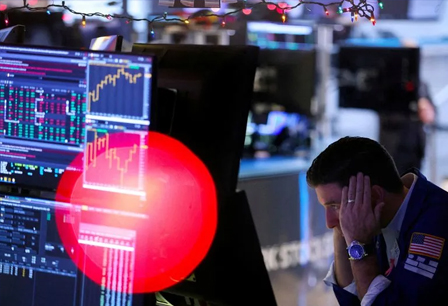Today's newsletter is by Jared Blikre, a reporter focused on the markets on Yahoo Finance. Follow him on Twitter @SPYJared.
Bear market rallies are the stuff of legends.
Born through a combination of conditioned dip-buying and FOMO — or a fear of missing out from investors — the bear market rally's purpose is to maximize investor pain. And these events do it well.
The market lures in new longs, only to eventually send stocks to new lows.
At the beginning of bear market turns, these rallies are flashy and short-lived. As the market grinds lower, these rallies tend to grow bigger, more exciting, and quite deceptive.
During the Financial Crisis, the market head-faked investors with three minor rallies from fall '07 through summer '08 — of 8%, 12%, and then 7%, respectively — suckering in new longs near the 2007 record highs.
And then markets really started messing with investors.
Declines of 45% and 51% from record highs were met with rallies of 18% and 24% in the fall of 2008, moves that came several months before the market's ultimate bottom in March 2009.
Suddenly, headlines were reading: "Stock market 20% off the lows," enticing traumatized investors to possibly pull the trigger on what remained of their cash position — only to see new lows in the coming weeks and months.
During the dot-com bubble burst, it took nearly three years for the bear market to finally shake out bagholders from the first tech mania.
The S&P 500 dropped 49% from record highs before hitting its ultimate bottom in late 2002. Over the course of 2001 and 2002, the S&P 500 saw no fewer than four rallies of 19% or more.
It wouldn't be until the spring of 2007 that the benchmark index would reach another record high. Just in time, of course, for the aforementioned Financial Crisis.
Bear markets test investors, both on the way up and way down. When the news cycle seems like it can't get anymore horrifying, stocks seize an olive branch. Perhaps it is a reprieve from a hawkish central banker or a drop in sky-high oil prices.
But no matter the catalyst, bear market rallies can send stocks off to the races, and weary investors don't want to miss out.
Rinse, repeat.
At its most recent lows, the S&P 500 (^GSPC) was down over 23%, and the rallies so far this year have been shallow and short-lived. The largest was a roughly two-week move at the end of March that produced an 11% bounce for the index.
March's move was particularly rough for traders, as this rally took out February highs which weren't too far from the S&P 500's record close seen on January 3, 2022. Anyone who bought that breakout was treated to a 16% loss over the next seven weeks.
This bear, it seems, is still young.
A less forceful 7% rally in late May and early June was knocked down by inflation rearing its ugly head again, with a four-decade high for the consumer price index tipping the S&P into "official" bear market territory.
And now we're barely off the new lows. Again.
From here — if history is any guide — this bear market will only get trickier and more frustrating as subsequent rallies likely grow bigger.
"If they don't scare you out, they wear you out," says AlphaTrends.net founder Brian Shannon.
Something to keep in mind if we're sitting here at the end of June, or July, or August looking at the biggest rally of the year.












